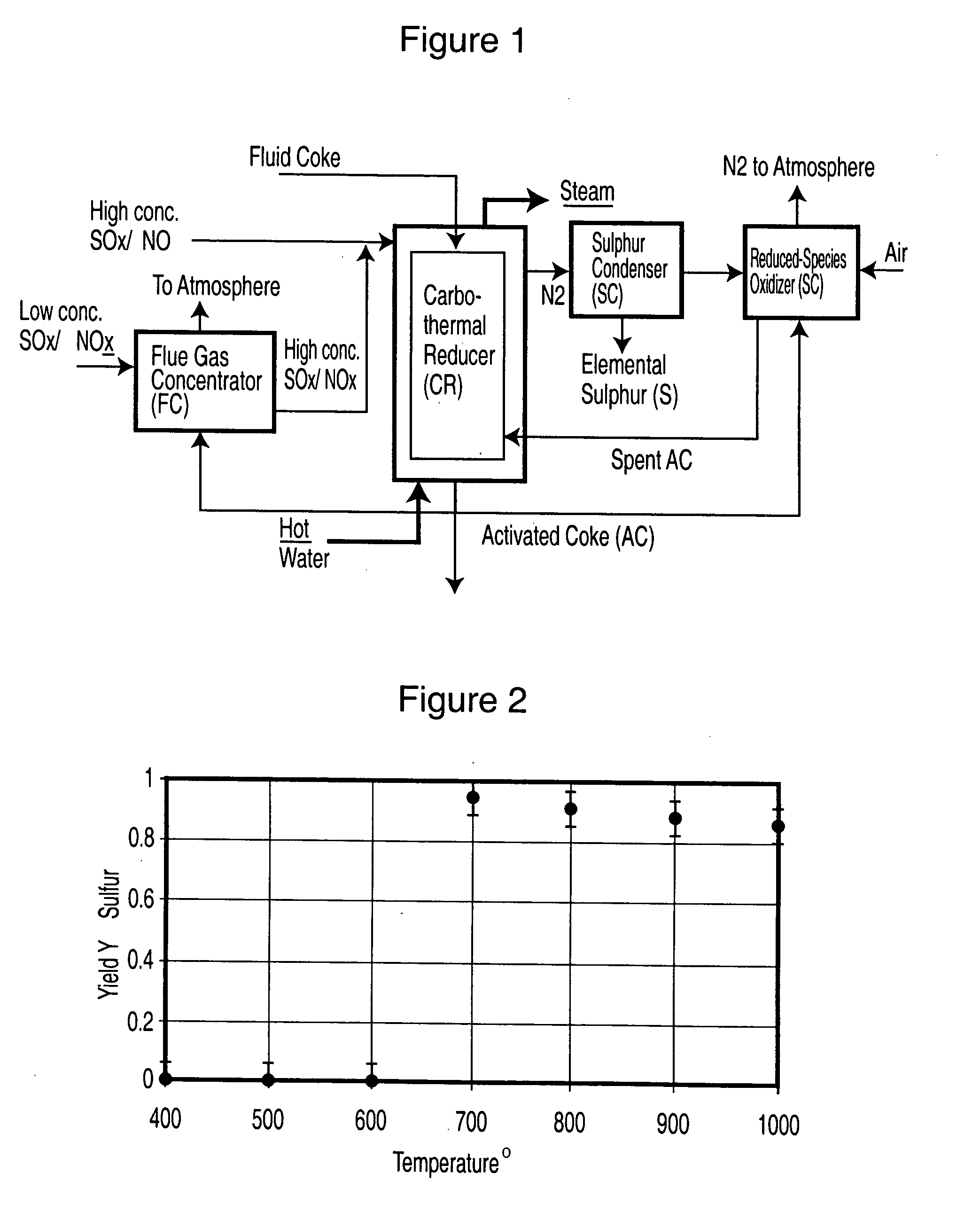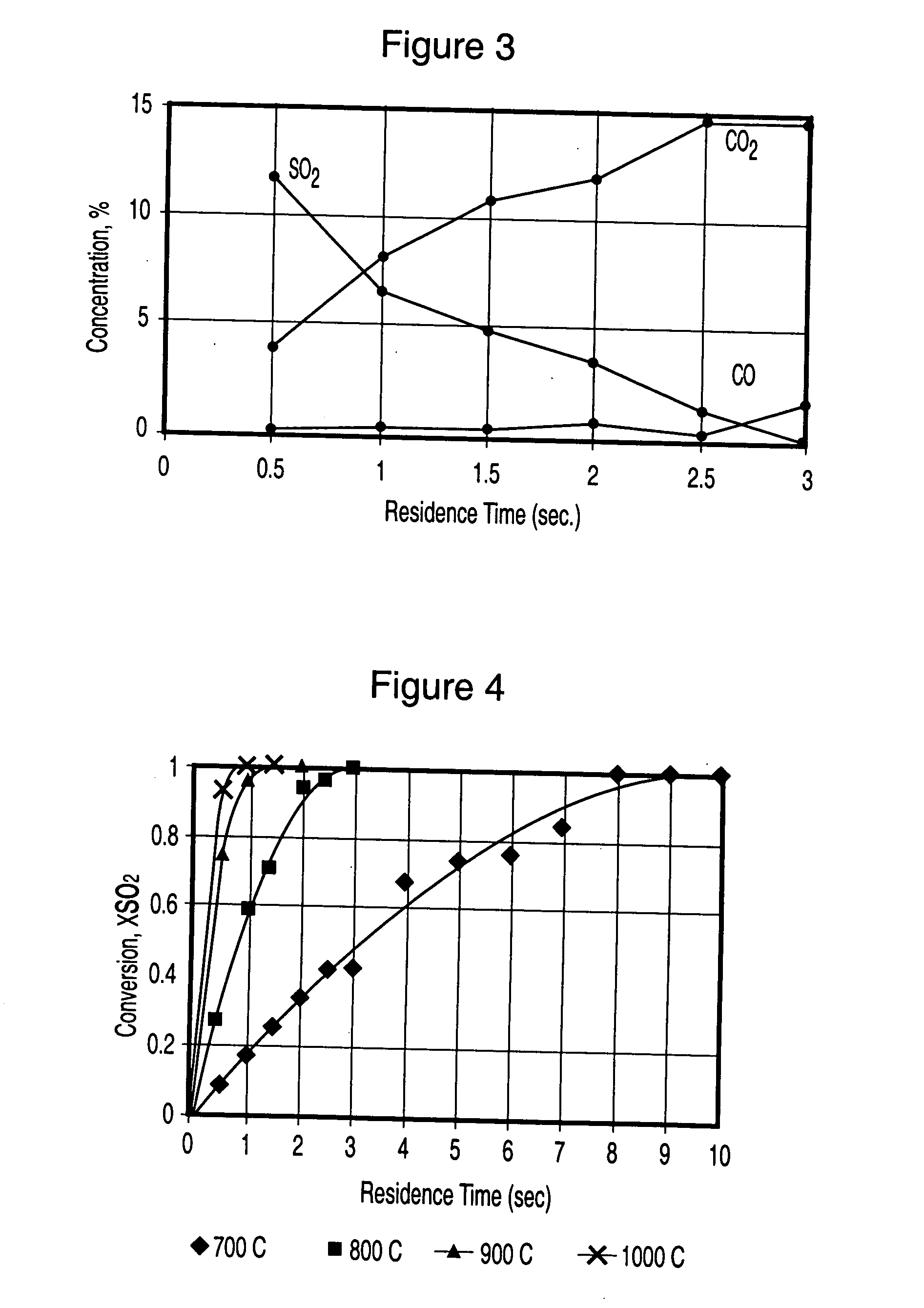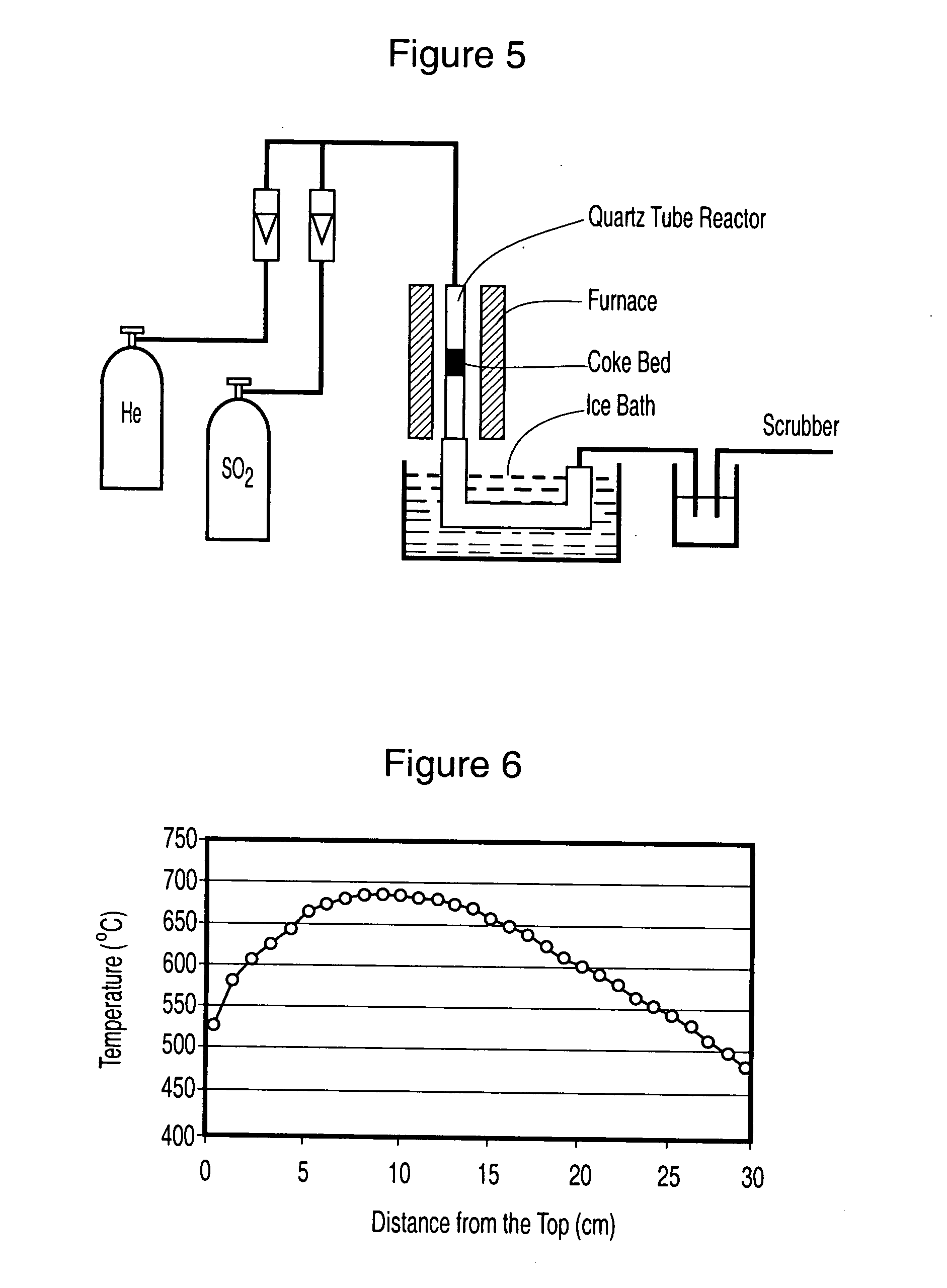Production of sulphur and activated carbon
a technology of activated carbon and sulphur, which is applied in the direction of combustion process, inorganic chemistry, combustion treatment, etc., can solve the problems of inability to meet the requirements of production
- Summary
- Abstract
- Description
- Claims
- Application Information
AI Technical Summary
Problems solved by technology
Method used
Image
Examples
example 1
[0084] Reduction of So.sub.2 and Activation of Coke
[0085] The experimental arrangement shown in FIG. 5 was used.
[0086] Fluid coke was charged into the fixed bed unit at 800 C. Gas containing 30% SO.sub.2 was fed into the unit. The flow rate of the gaseous mixture was adjusted so that the contacting time between the gas and the coke was about 10 seconds. The percentage of coke oxidized was about 10%. As a result, an essentially complete removal of SO.sub.2 from the feed gas was achieved. Over 68% of SO.sub.2 was converted into elemental sulphur. The activated coke had a BET surface area over 300 m.sup.2 / g, compared to about 7 m.sup.2 / g of the raw coke. Date is shown FIG. 10.
example 2
[0087] Utility of ECOcarbon Produced by the SOactive Process
[0088] Mercury Vapour Adsorption
[0089] Three small glass vials containing 0.5 to 0.9 g of untreated coke, treated coke and commercial activated carbon were placed in a desiccator with an open flask of liquid mercury. The desiccator was sealed and then placed in an oven at 45.degree. C. The weight changes in the carbon samples were recorded as a function of time. The mass of mercury adsorbed at steady state is shown in Table 1.
1TABLE 1 mercury vapour adsorbed per gram of carbon data set 1 data set 2 mean adsorbent mg / g mg / g mg / g untreated coke 3.1 7.3 5.2 .A-inverted. 2.1 treated coke 28.2 14.6 21.4 .A-inverted. 6.8 commercial 10.0 8.9 9.4 .A-inverted. 0.6 activated carbon
[0090] Despite the variability between data sets, it is very clear that the treated coke (ECOcarbon) has a much higher capacity for mercury adsorption than commercial activated carbon. The variation between data sets is partially due to the differences in a...
example 3
[0093] Various samples of fluid coke were charged in the reactor described in FIG. 5 and activated. FIG. 9 demonstrates the ability of the process to change the ratio of macro to micropore size through the use of reactor temperature. Unlike commercial activated carbon, the amount of macropore area can be changed from about 58% to 42% of the total pore area. The control of macropore are can be used to change the kinetic reactions rates of the ECOcarbon produced.
PUM
| Property | Measurement | Unit |
|---|---|---|
| temperature | aaaaa | aaaaa |
| temperature | aaaaa | aaaaa |
| temperature | aaaaa | aaaaa |
Abstract
Description
Claims
Application Information
 Login to View More
Login to View More - R&D
- Intellectual Property
- Life Sciences
- Materials
- Tech Scout
- Unparalleled Data Quality
- Higher Quality Content
- 60% Fewer Hallucinations
Browse by: Latest US Patents, China's latest patents, Technical Efficacy Thesaurus, Application Domain, Technology Topic, Popular Technical Reports.
© 2025 PatSnap. All rights reserved.Legal|Privacy policy|Modern Slavery Act Transparency Statement|Sitemap|About US| Contact US: help@patsnap.com



